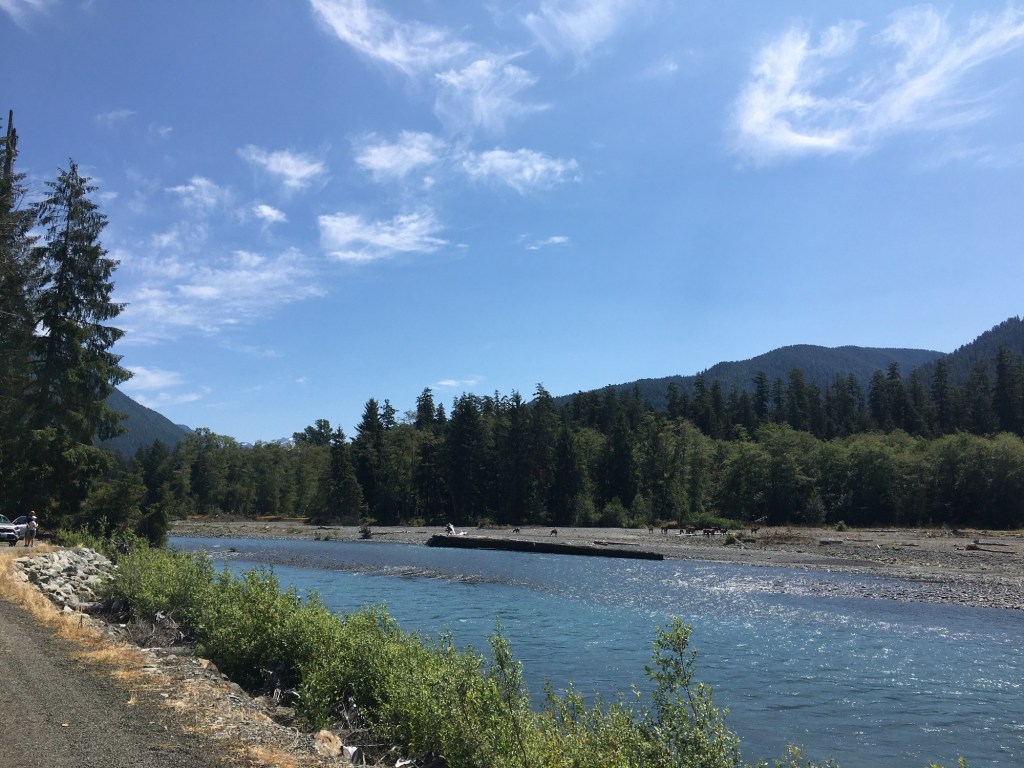
Lynda V. Mapes | (TNS) The Seattle Times
SEATTLE — They tower and drip, their curtains of moss damp in windblown fog: rainforests of the Pacific Northwest, unique in all the world.
These are the old-growth forests of the temperate zone, in the U.S. mostly protected in parks or on federal lands west of the Cascades. Hoh, Queets, Quinault. They include some of the tallest and biggest tree species of their type in the world. The Quinault’s Giant Sitka Spruce, the reigning global champ, is estimated to be 1,000 years old. Western red cedar, and the thick gloom of western hemlocks with their feathery branches, loom large.
Just inland from the Pacific Northwest’s rainforest drip line, with more than 10 feet of rain a year, are the forests dominated by Douglas fir, western red cedar and hemlock, growing in the mild climate with some 70 inches of rain a year, in a thick rumpled green cloak in the Cascade lowlands.
These big trees, in their roots, needles and branches, hold more carbon longer than any young plantation, fast-growing and cut on quick rotations. They are world champion climate change fighters.
Globally, forests suck up about a third of all annual fossil fuel emissions, according to a 2011 study by the U.S. Forest Service. Right here at home, the moist forests of the Pacific Coast are the most carbon dense in the country, according to a 2024 scientific journal, and among the most carbon dense on Earth, scientists determined in 2009.
In Southwest Washington, the Doug firs bulk up; the old ones’ grand branches are so wide that the marbled murrelets they house don’t even need to make a nest, so mossy and soft are their redoubts deep in the tree canopy. Here in the steady sweet rains, cedars can persist for centuries, their tops silvered and shattered, their trunks as wide as a garage door.
Trees are made out of thin air, as sunlight energizes special cells in their leaves called chloroplasts. It’s the magic of photosynthesis, the superpower of all green plants.
Carbon enters the leaves through microscopic holes on their undersides called stomata. The carbon is transformed into sugars, food the tree uses to grow, which locks the carbon away in the leaves, trunk, branches and roots.
Trees do all this silently, constantly, their trunks swelling during the day as they take up water to make food, and shrinking at night as the water sinks back to the roots. Day by day, hour by hour, except when dormant in winter, trees cleanse carbon from the air and create pure oxygen for us to breathe, as well as food and homes for people and countless nonhuman beings.
They moderate temperature, hold the soil and slow runoff. So beneficial are trees that it is hard to imagine life as we know it without them. And forests, absorbing a third of all annual fossil fuel emissions, are key to our future survival.
Big trees also help sustain summer stream flows: Young forests suck up water even when buffer strips are left, reducing summer stream flow by as much as 50%, according to a peer-reviewed scientific paper published in 2019 — and the effect persists and intensifies as new plantations grow, for as long as 50 years.
Once trees are cut, their carbon-cleaning days are over — they start decomposing and putting that carbon back into the air.
Even when made into forest products, those are usually headed to landfills within decades, while a living Douglas fir or cedar can persist for 800 years or more and keep right on sequestering carbon, Oregon State University emeritus professor Beverly Law points out in her 2018 paper. She argues that the best carbon capture technology to slow climate change is a forest — left alone to keep right on growing.
___
©2024 The Seattle Times. Visit seattletimes.com. Distributed by Tribune Content Agency, LLC.

















































